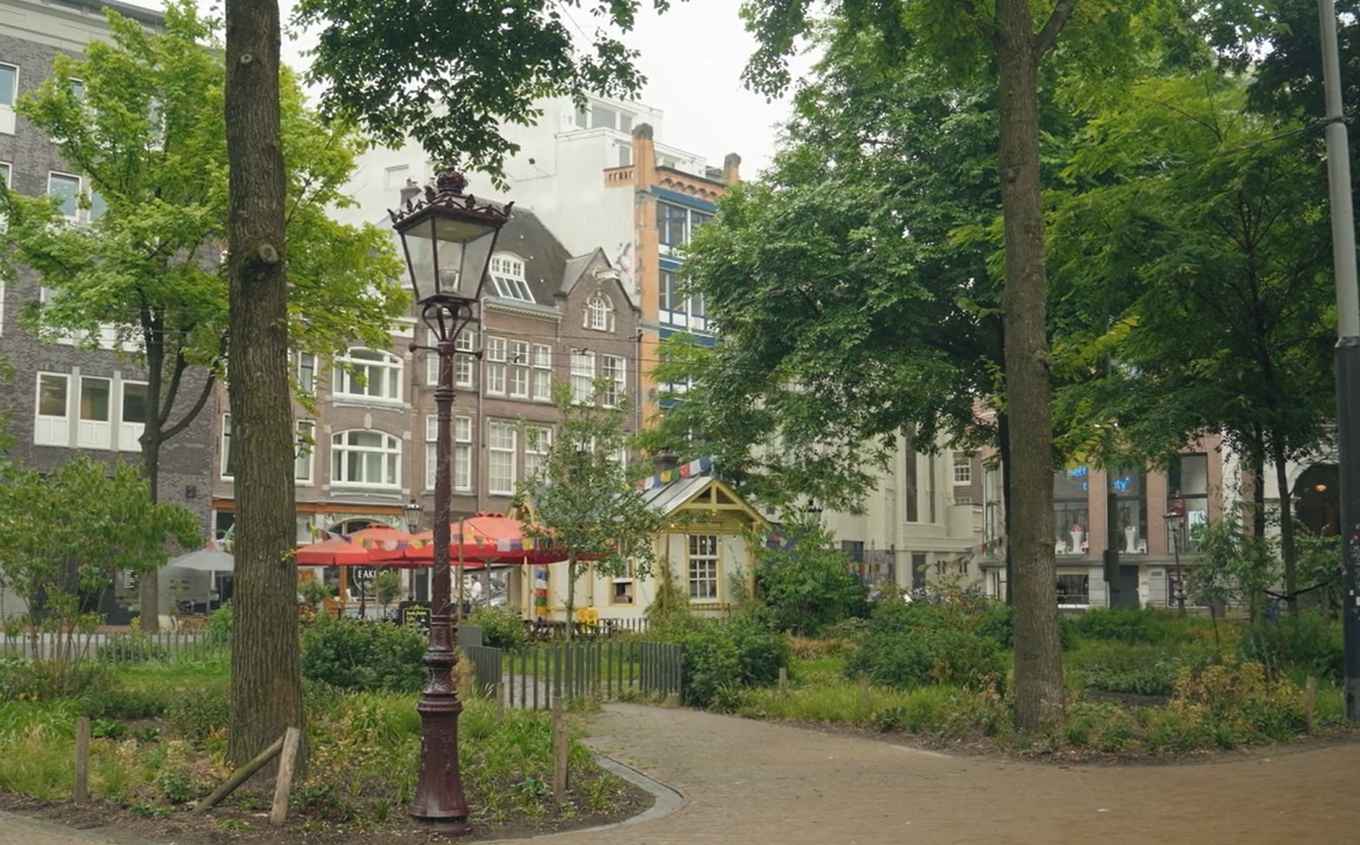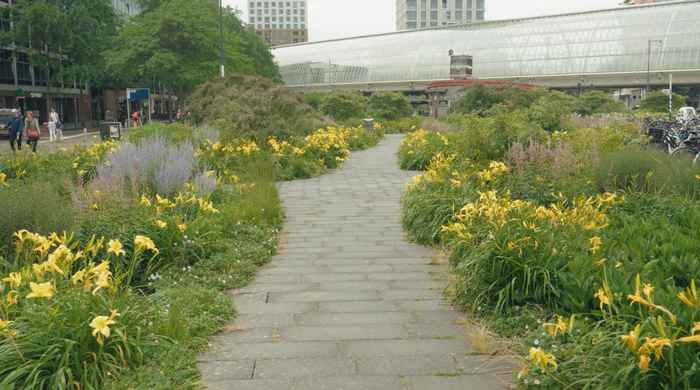Sponge cities: how we prepare for drought
Spatial planners Mendel Giezen and Jannes Willems explain how the Netherlands can prepare for more frequent droughts
17 July 2025

‘Many people think of drought as something that affects farmers in the countryside,’ says Mendel Giezen. ‘But it’s also a problem in cities. In Amsterdam and Rotterdam, for example, many houses stand on wooden piles. If the water level drops too low, the piles are no longer underwater and start to rot. That can cause serious damage.’ In other parts of the country, drought is becoming more common too. In summer, river water levels often drop so far that ships can no longer sail.

In Amsterdam and Rotterdam, many houses stand on wooden piles. If the water level drops too low, the piles start to rot.Mendel Giezen
Getting better prepared
According to Jannes Willems, the Netherlands is working hard to become more drought-ready. Cities such as Arnhem and Dordrecht, and rural areas like North Brabant, are ahead. But bigger cities are also making progress. ‘In Amsterdam, for example, a square on the Nieuwezijds Voorburgwal has been redesigned with lots of trees and plants. Underneath, there are water crates that collect rainwater. During dry periods, the crates release the water to the plants and trees. This keeps the area green and cool, even during long dry spells.’
‘These kinds of solutions also make cities more pleasant to live in,’ Willems adds. ‘People can sit in the shade when it’s hot, so it helps reduce heat stress too.’

One solution is the ‘sponge city’: rainwater is stored and reused later. This helps keep the groundwater level steady.Mendel Giezen

The sponge city
‘Scientists call this type of solution a ‘sponge city’,’ explains Giezen. The city acts like a sponge: it collects rainwater and uses it later when it’s dry. This slows down the drop in groundwater levels.
Another example of a sponge city is found near Amsterdam Sloterdijk Station. There too, water crates under the ground store rainwater. During dry periods, the water is used for the plants. So rainwater doesn’t flow straight into the sewers, but stays useful in the city.

In North Brabant, we are making streams meander again, so water stays longer and nature can handle drought better.Jannes Willems
Bigger changes needed
According to Willems, the whole Dutch water system needs to change — not just in cities. ‘For a long time, we made streams and ditches straight so water would drain quickly. But that means there is less water during dry times. In North Brabant, for example, we’re now making streams meander again and making them shallower. This helps the water stay in the area longer, so nature is better protected against drought.’

My research looks at different types of vulnerability together, so we can better understand who needs extra protection during drought and heat in the city.Jannes Willems
Drought hits some groups harder
When it gets warmer than 25 degrees for a few days, we Dutch people like to complain about the heat. But heat and drought don’t affect everyone equally. ‘People in social housing are often more vulnerable than homeowners,’ says Giezen. ‘Their homes may be poorly insulated, or they may not have a garden or balcony. Income and health also play a role — older people, for example, are more at risk.
The city as a complex puzzle
Giezen and Willems play an important role in preparing Dutch cities for the future. They work with organisations that are making real changes — such as Amsterdam Weerproof.
In Amsterdam Weerproof helps the city prepare for both drought and heavy rainfall. They advise residents, businesses and the council on climate-friendly solutions, such as green roofs, water storage, and sustainable street design. ‘It’s a complex puzzle,’ says Willems. ‘In cities, you have to think about cyclists, trams, safety and climate measures. Rainproof helps bring all those needs together to find good solutions.’

We’re not just trying to make cities climate-proof, but also more beautiful and enjoyable to live inMendel Giezen
‘It’s not only about technology,’ Giezen adds. ‘It’s also about making sure people can live comfortably. That way, we’re not just making cities climate-proof, but also greener and better places to live.’